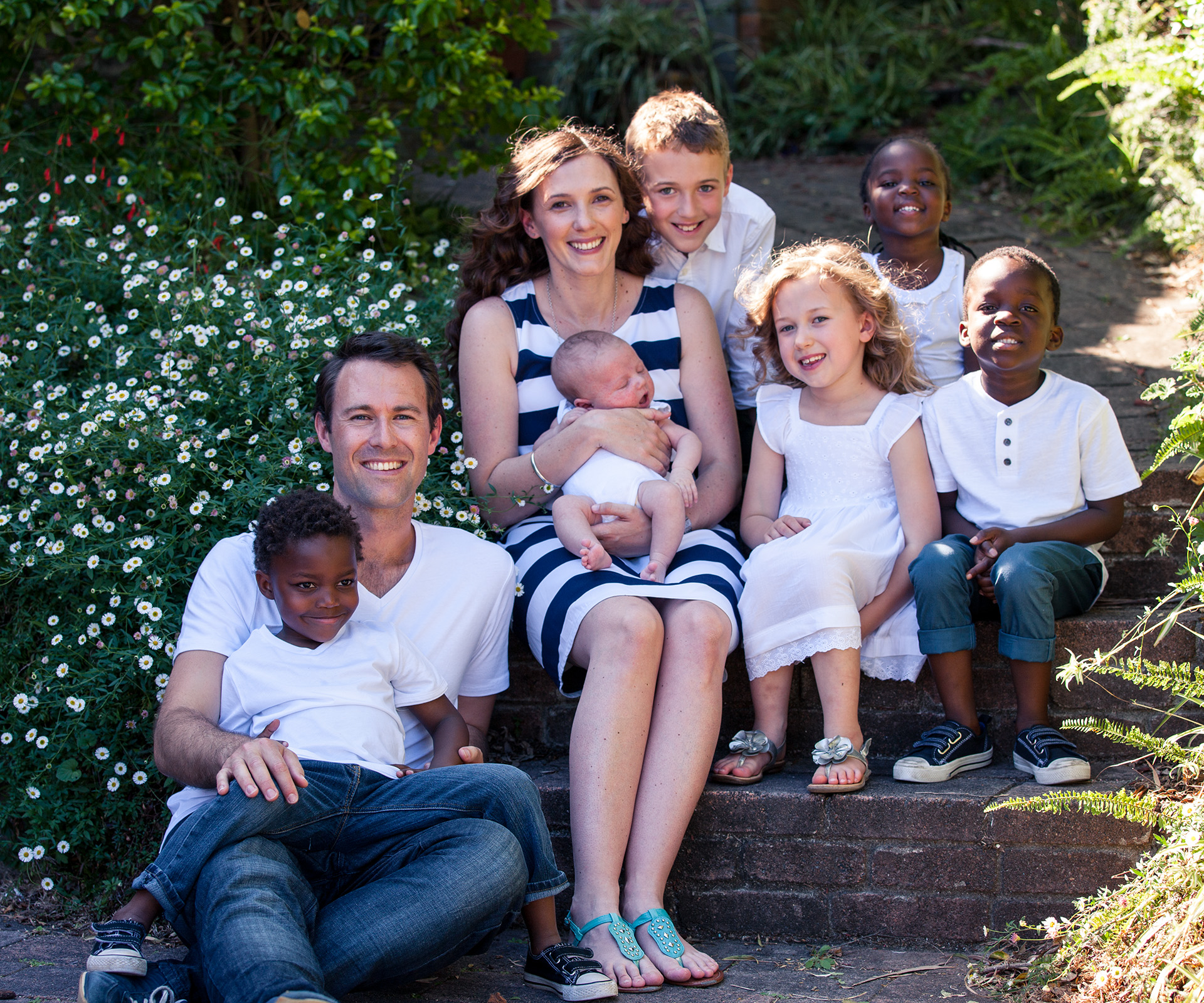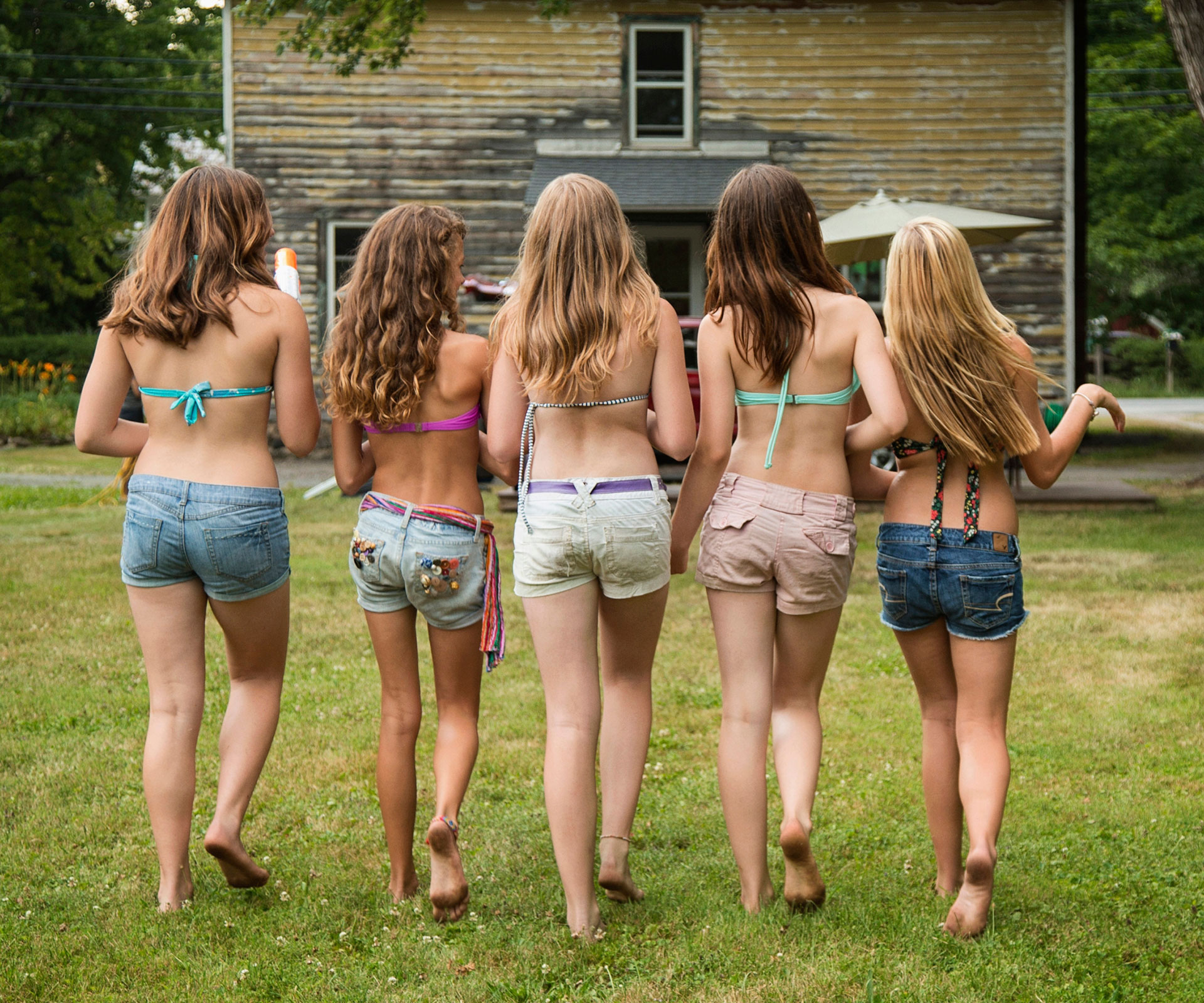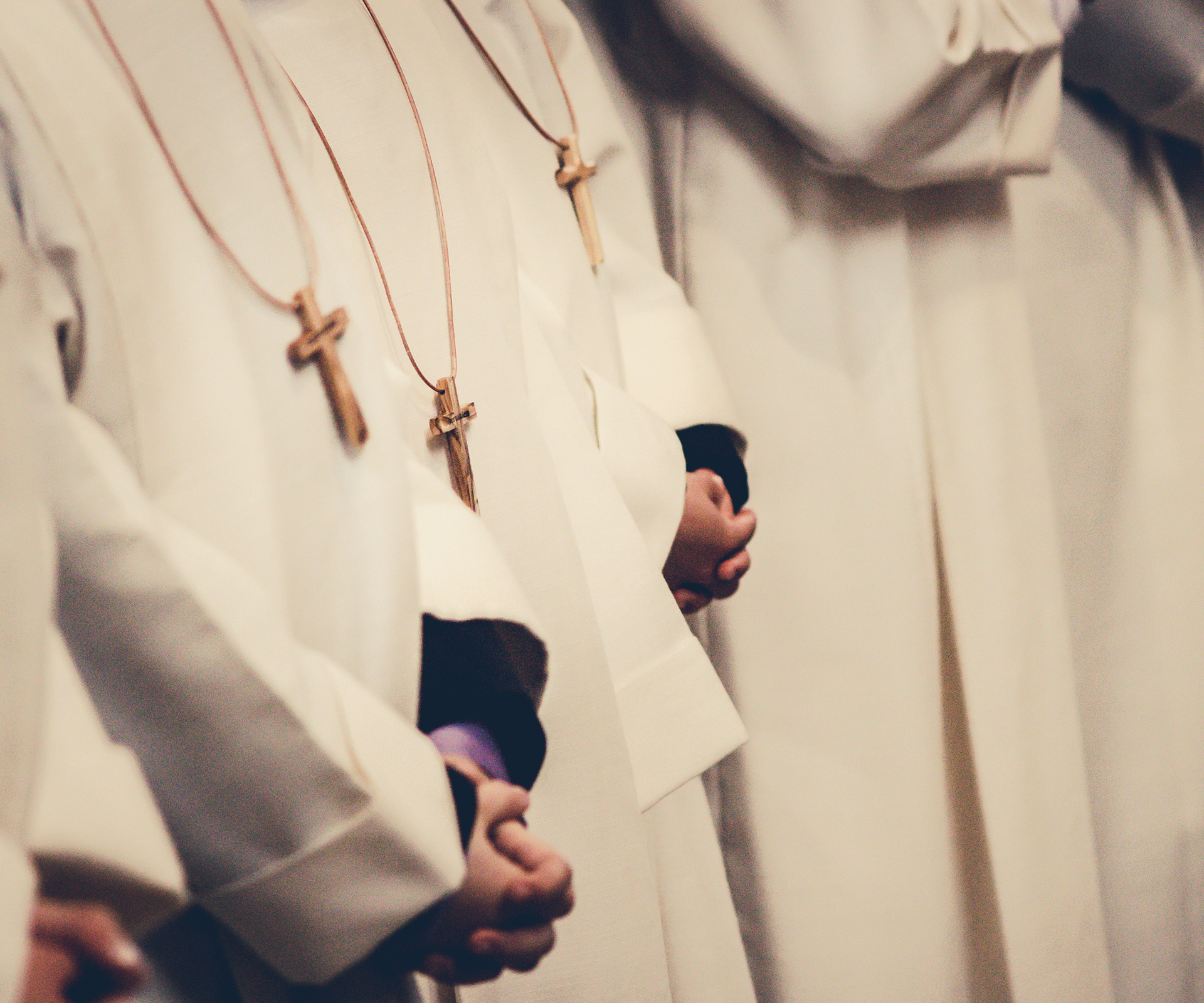Meet the Dombkins – a family that is proof of the adage that all you need is love.
When Mark and Anna Dombkins first held Jackson, their baby son, they made each other a pledge. “Everywhere you go when you have a newborn, everyone wants to love him, to touch him and give him a cuddle,” recalls Anna, a 33-year-old teacher.
“We’d watched a documentary about orphanages in China. There were so many children there that needed to be cuddled and loved, just as we were loving our baby.
“We hadn’t thought about adopting, but when we held him, those images of children who had never been held kept coming back to us. The contrast between them and our child was so stark. We promised each other we would do everything we could to share that love with children who needed it.”
Sharing simply doesn’t seem a big enough word for what Anna and Mark have achieved. Today, they have three biological children and three orphans adopted from Tanzania, Africa.

Mark and Anna Dombkins with their children Max, Jackson, Jabari, Shay, Charlie and Jemima.
As happy as they are, Mark and Anna say their attempts to create their family have not all been easy. As National Adoption Awareness Week focuses attention on the issues surrounding adoption, they spent years trying to navigate their way through the bureaucracy that surrounds international adoption in Australia.
“We started this journey here in Australia and it was clear from the start that it was going to be a long journey, but we were willing to pursue that,” says Mark, also 33 and a high school maths teacher. “But the truth is, that feeling that it was going to be long, frustrating and expensive didn’t go away.”
After attending an adoption seminar in 2007, Mark and Anna decided to become part of the Ethiopian inter-country adoption program, but that was beset by problems and closed by the Australian government in 2012. As exasperating as that was, Mark and Anna ultimately found another way. In 2010, both were offered positions at the International School in the rural city of Moshi, in northern Tanzania, not far from the Kenyan border. By then, they had also added Jemima to their family.
“After being in the Ethiopian program, we had done a lot of research about adopting from Africa. When the [teaching] opportunity came up, we thought, what a great chance to see everything first-hand,” says Anna. “We also started to research the adoption laws in Tanzania so we could pursue that while we were there.”
As it turned out, the Tanzanian adoption laws were compatible with Australian laws. Yet what struck both Mark and Anna about Africa was the degree of poverty and need. “We heard a lot of stories about people who couldn’t feed their children, people who would try to get on to social welfare, but were turned away and there was no one to help them,” says Anna. “And among the worst affected were children who were orphaned because they have no one to turn to. There is nothing else for them to do but scavenge for scraps of food.”
And that knowledge made them all the more determined to adopt a child from Tanzania. “Once we found out that the laws were compatible with Australia and that we met the criteria, we knew we wanted to find a child there,” says Anna, who, with Mark, learned to speak Swahili. “It was easier working from that end because it was much quicker than in Australia, but the system has challenges – living in a Third World country, dealing with a bureaucracy where you don’t understand how things are done.
“But perhaps the best thing was that once we found the children that we were interested in adopting, the system encourages the children to live with you and your family while the adoption is being processed.”

“We want them to know how they came to be part of our family.”
Just a few months after they moved to Moshi, they were able to welcome three orphans into their home: Jabari, a boy, and twins Shay, a girl, and Charlie. “They were able to live with us as foster children while we were going through the process,” says Mark. “And that was an amazing thing for us as parents, for our own children and for them because they were immediately able to have the care and love that a family can provide.”
Incredibly, there is only about nine months separating Jabari, Shay and Charlie, and Jemima. “They are a tight little pack,” says Anna. “Shay and Charlie will turn five in a couple of weeks, so then we will have four five-year-olds running around the house.”
Mark and Anna believe adopting their children in their country of origin has been a blessing because it meant that they could start together as a family, but also see the children in their own culture.
“We want them to know where they come from and how they came to be part of our family,” says Anna. “They will have some memories of that, I am sure, as we all will. Africa is just as much a part of Jackson and Jemima as well.”
Mark and Anna, who recently gave birth to their third biological child, Max, brought their blended family back to Australia last September. “Jabari, Shay and Charlie had barely ever left the village where they were born,” says Anna. “And it’s easy to forget that, until they point at something that they haven’t seen before. They love it here.”

Anna with son Max.
Mark and Anna are vocal supporters of the AdoptChange campaign, which seeks legislative reform for inter-country adoption. “We know that there are many children who could benefit from becoming part of families here in Australia,” Mark says. “When you have children in Africa who have no one and families here who want to adopt, then it simply doesn’t make sense for those two goals not to meet.”
A version of this article first appeared in the November 2014 issue of The Australian Women’s Weekly.
Photography by Nick Scott. Styling by Carlie Oates.


